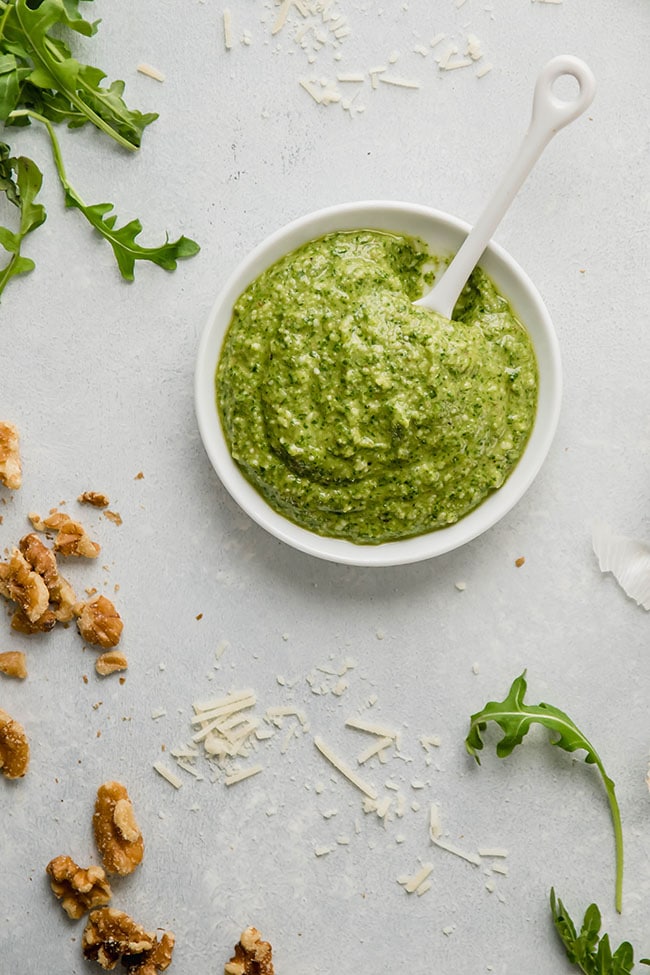4 Simple Steps to Make Your Homemade Pesto Taste Yummy
Pesto is one of those recipes that you can take in so many different directions. It doesn’t have to be just a nut and olive oil-based sauce to go on pasta. Add some vegetables, use a different type of oil, or layer it with cheese. All are delicious ways to enjoy this versatile sauce…unless the pesto is bitter. Pesto becomes bitter when the basil leaves are not properly dried before creating the final product. With only 4 easy steps, you can make your pesto taste as good as it should be!

The problem with bitter pesto
Pesto is all about the fresh basil leaves. And, it’s not just about the flavor of the basil, it’s also about the texture. Basil has a firm and crunchy texture. When you add olive oil and nuts to pesto, this texture is amplified. But, when you don’t dry your basil before adding it into the final product, pesto becomes bitter. Pesto becomes bitter because while you’re chopping up your basil leaves with a knife, they start to oxidize and change color. The chlorophyll in them starts to turn brown. This is why some recipes call for blanching and shocking your basil leaves in ice water before using them in pesto. Fortunately, there are 4 simple steps that will fix your bitter pesto:
Also Read: Delicious Dumplings
- 1) Cut off any browned or blackened parts of the leaves
- 2) Rinse your basil
- 3) Drain excess water from rinsed basil
- 4) Measure out 3 cups of fresh water
Why did it become bitter?
Pesto is a dish that many people love to make. There are different variations on the recipe, which can include vegetables, different types of oil and cheese. One popular way is to use basil leaves as the base ingredient. Basil leaves need to be dried before combining them with other ingredients in order for your pesto to have a sweet taste. If you didn’t dry the basil leaves well enough, then your pesto will become bitter instead of sweet.
How to Fix Your Bitter Pesto
If your pesto is not tasting as good as it should, there are a few easy steps to take to fix it. First, put the pesto in the fridge and let it rest overnight. This will allow some of the water to evaporate which will help take away some of the bitterness. Adding lemon juice or white wine vinegar can also help cut back on the bitter taste. If your basil leaves were not fully dry before making the pesto, you can chop up more basil leaves and add them to your mixture. This will add another herb and create a sweeter flavor to offset any bitterness that still lingers in your pesto sauce. Finally, if all else fails and your pesto is still too bitter, simply strain it and discard the solids which should be mostly basil leaves anyway. The remaining liquid will be smooth and delicious!
Conclusion
One of the advantages of making your own pesto is that you can control the flavor. But sometimes your pesto can turn out bitter and you’ll need to know how to fix it. Here are four steps to making your homemade pesto taste yummy again.
- Start with a pasta sauce that is a bit sweet or acidic.
- Add a little lemon juice, or add some grated lemon zest.
- To balance the flavor, add a little honey or sugar.
- Add some additional salt and pepper to taste.



























Add comment